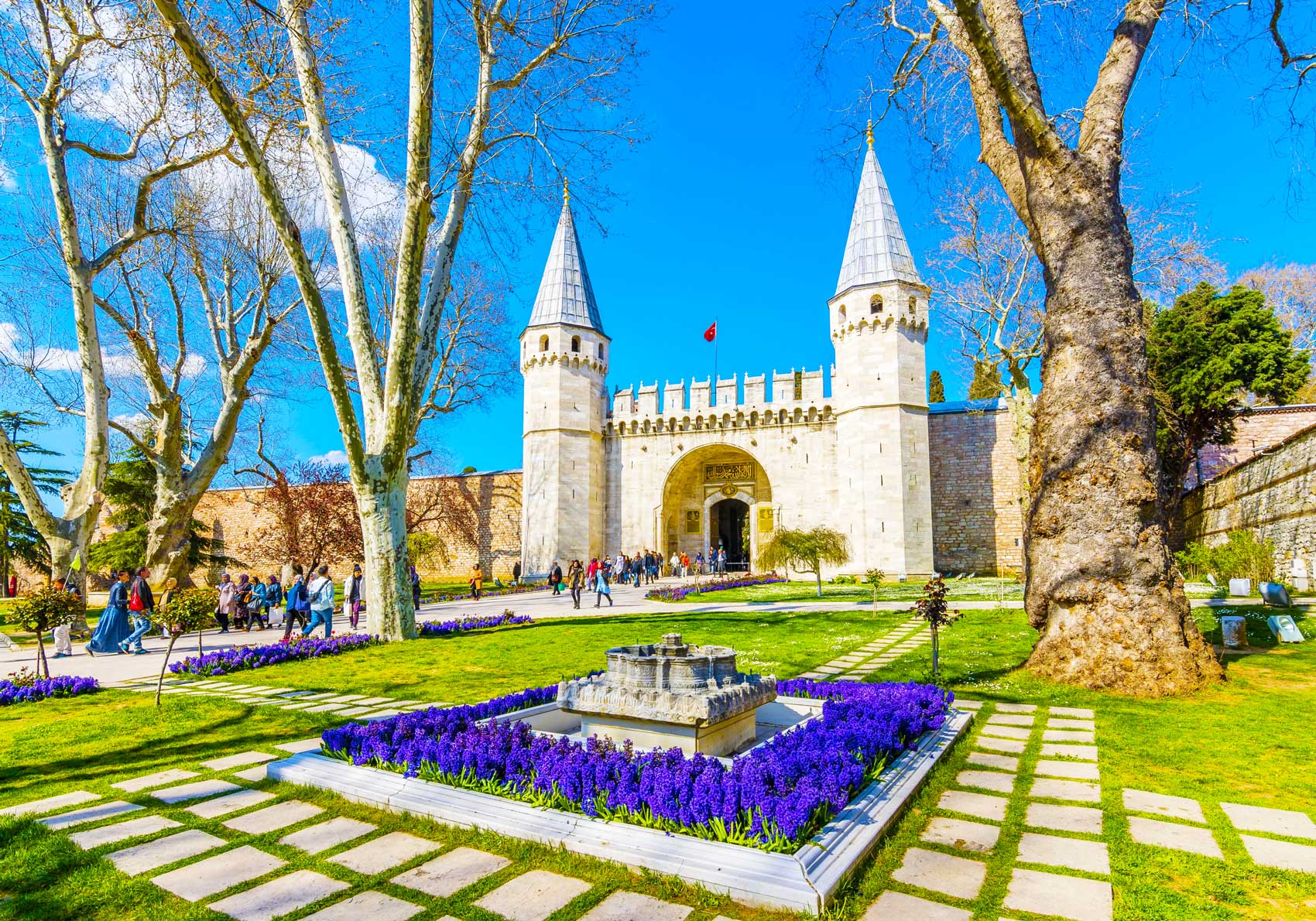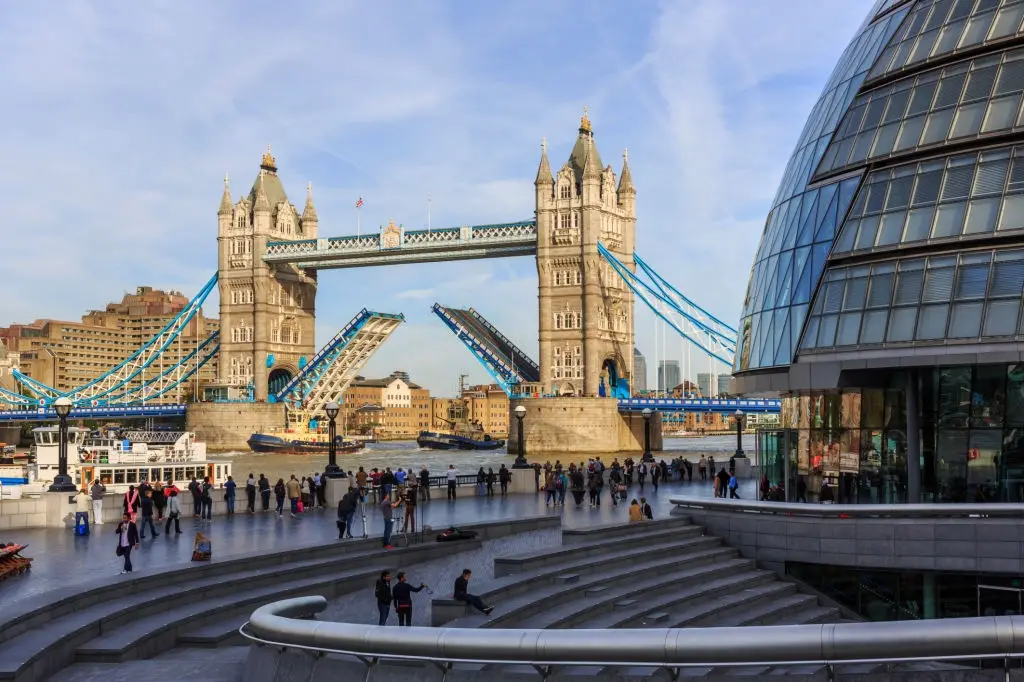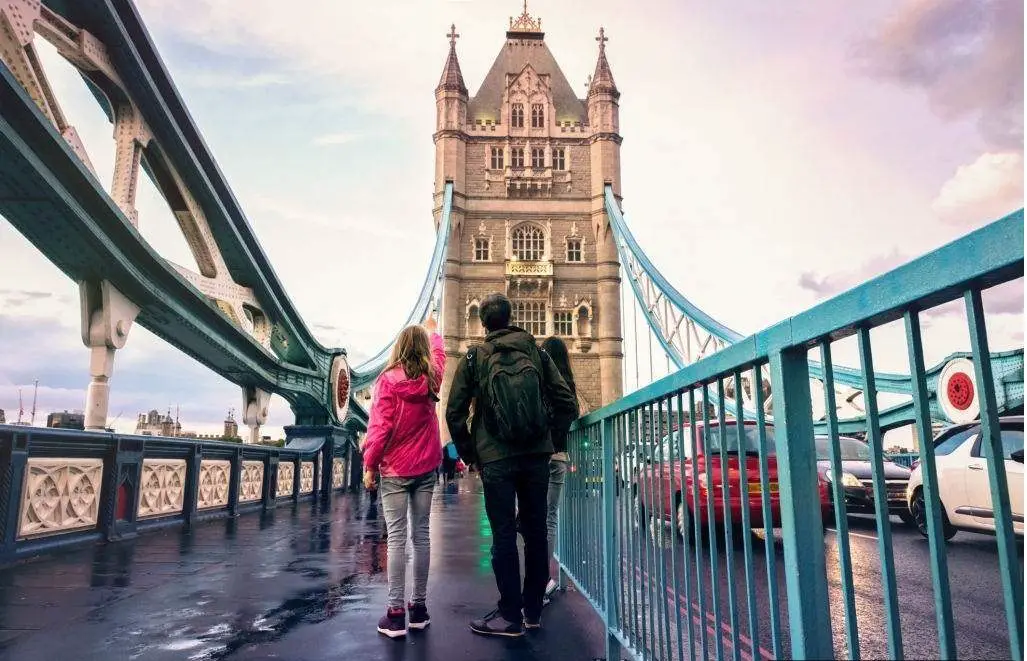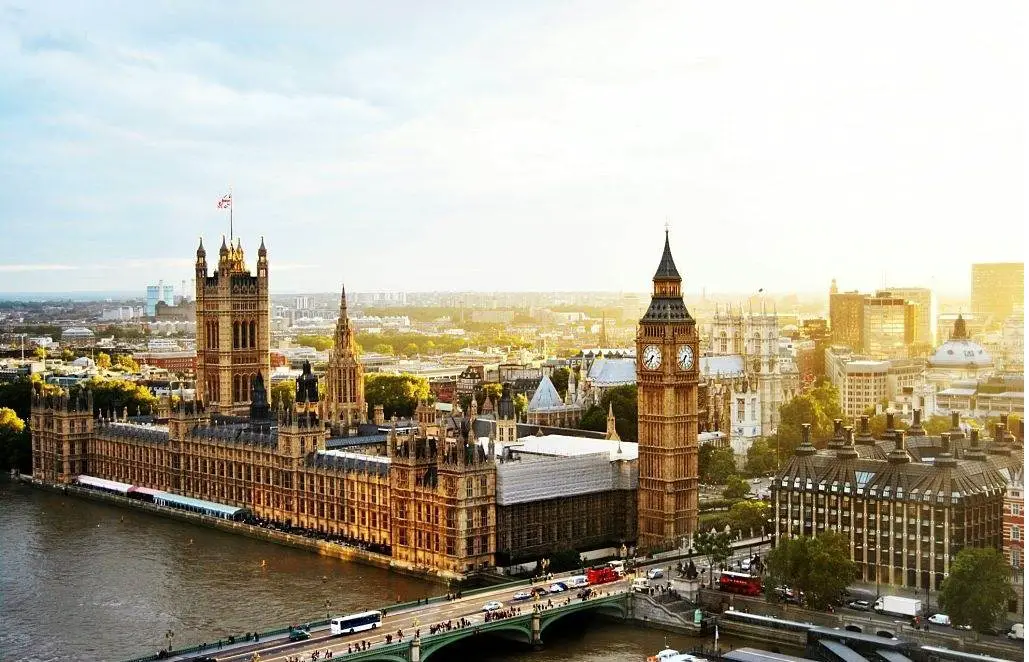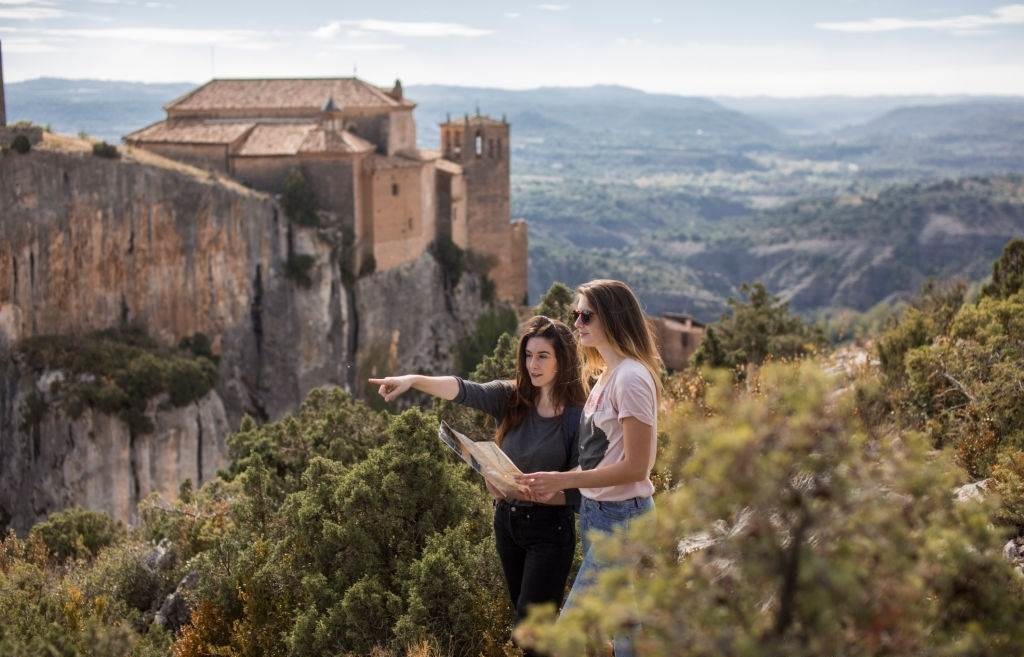Topkapi Palace Museum is Istanbul’s grand time capsule & one of the top things to do in Turkey, an intimate city within a city where Ottoman sultans lived, ruled, and curated a world-spanning collection of art, jewels, manuscripts, and sacred objects. Set on Seraglio Point in the Old City, the palace commands cinematic views of the Bosphorus, the Golden Horn, and the Sea of Marmara.
Walk through its ceremonial gates, and you move gradually from public squares into private sanctuaries: busy kitchens, council chambers, tulip-filled gardens, and the labyrinthine Harem. This guide distills what matters most: history, must-see rooms, practical logistics, and expert travel tips, so you can savor Topkapi with context and confidence.
For travelers who love places that still “feel” alive, the Topkapi Palace Museum is irresistible. It served as the Ottoman court’s principal residence and administrative hub for nearly four centuries, then became a museum in the early Republican era, safeguarding the palace’s architecture and its extraordinary collections.
Essential History of the Topkapi Palace Museum
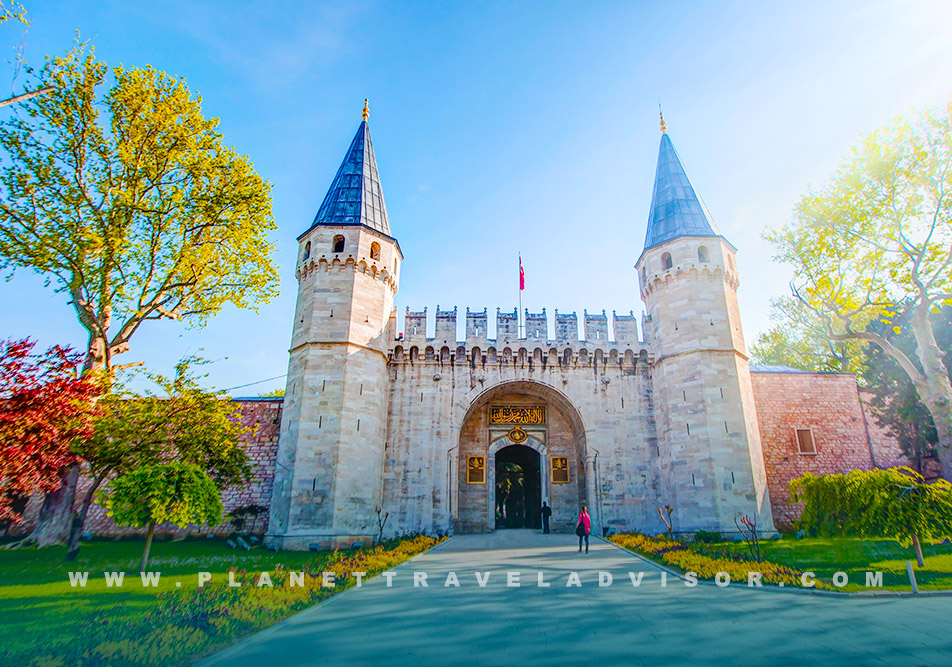
The story begins in the 1450s. After the conquest of Constantinople in 1453, Sultan Mehmed II (Mehmed the Conqueror) chose the ancient acropolis ridge for his new seat of power. Construction started soon afterward, and by the late fifteenth century, the palace complex was functional, with its plan organized around four successive courtyards. Rather than one colossal building, Topkapi evolved as a campus of pavilions, service quarters, gardens, and ceremonial gateways, a flexible design that allowed the court to expand and reconfigure spaces as tastes and needs changed.
From roughly 1478 until the court’s move to Dolmabahçe in 1856, Topkapi was the beating heart of the empire. Policy and diplomacy unfolded in the Imperial Council chambers; festivals, processions, and investitures animated the grand squares; and the sultan’s private life played out behind guarded thresholds. The palace grew under illustrious sultans and visionary architects, most famously Mimar Sinan, absorbing new kiosks, baths, libraries, and ornate interiors that reflected Ottoman aesthetics at their zenith.
In 1924, soon after the Republic of Türkiye was established, the palace was converted into a museum. That transformation protected both the structures and the objects they housed: gem-studded regalia, Chinese and Japanese porcelain, court costumes, Qur’anic manuscripts, and revered relics. Today, the Topkapi Palace Museum remains a flagship site within Istanbul’s UNESCO-listed historic core, carefully stewarded and continually restored so the next generation can step through the same gates and feel the same sense of awe.
The Layout That Shapes Your Visit to the Topkapi Palace Museum
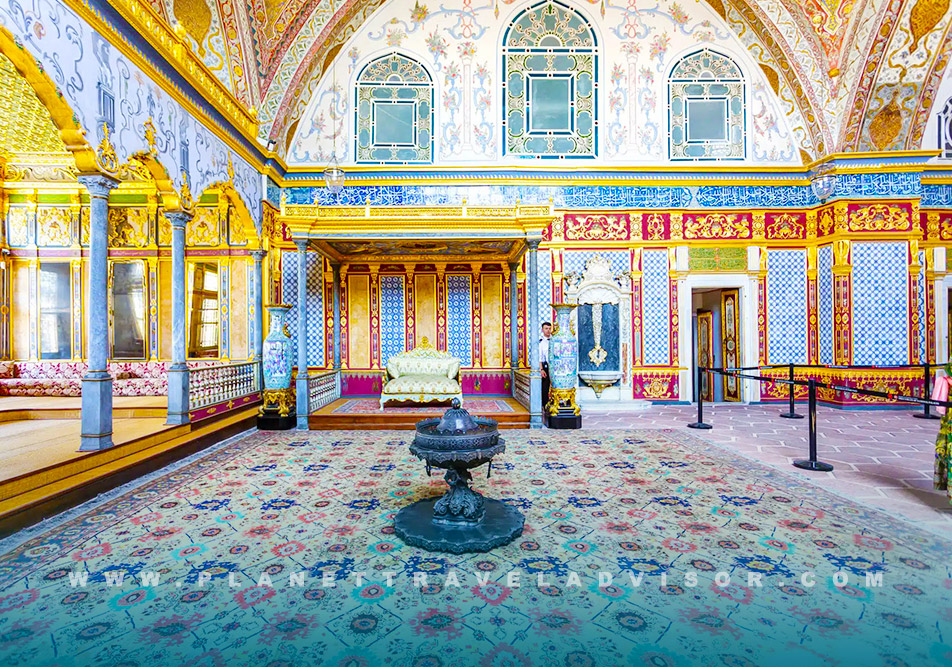
Understanding the palace’s “four courtyards” makes navigation easy. The First Courtyard (Outer Court) is a broad green precinct reached through the Imperial Gate; it includes Hagia Irene and once housed workshops and barracks. Through the Gate of Salutation, you enter the Second Courtyard, the governmental stage with the Imperial Council, the Tower of Justice, and the enormous palace kitchens whose chimneys punctuate the skyline.
Beyond the ornate Gate of Felicity lies the Third Courtyard, the inner palace with the Audience Chamber, the exquisite Library of Ahmed III, the treasury rooms, and access to the Harem. Finally, the landscaped Fourth Courtyard offers pavilions and terraces, the sultan’s more private realm, where you’ll find the Baghdad and Revan kiosks, the Circumcision Chamber, and a gilded pergola that frames unforgettable water views.
Move inward and the tone shifts: from formal and administrative to scholarly and intimate. This rhythm, public to private, official to personal, is the essence of a Topkapi visit, and it’s what makes the palace feel so human even at imperial scale.
The Highlights You Shouldn’t Miss inside the Topkapi Palace Museum
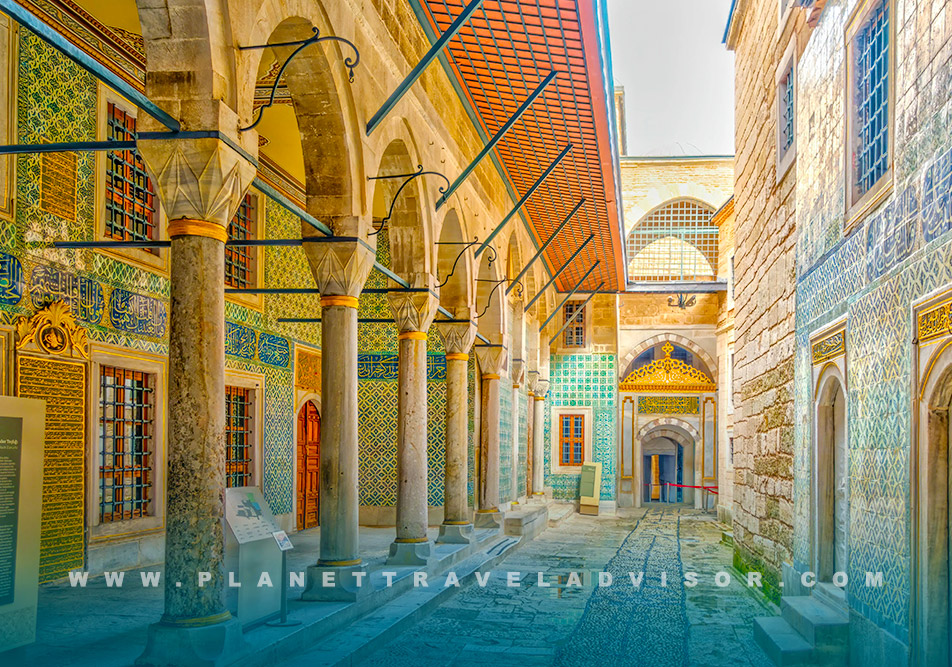
The Imperial Harem
More than a series of rooms, the Harem was a complete household with its hierarchy, education, and rituals. As you walk through tiled corridors and domed chambers, you’ll pass the apartments of the Valide Sultan (Queen Mother), audience halls where family ceremonies unfolded, and intimate baths warmed by underfloor heating.
Architects decorated the interiors with İznik tiles, stained glass, and woodwork inlaid with mother-of-pearl. Not all of the Harem is accessible, but the curated route is enough to understand the scale, beauty, and complexity of life within those walls. Note that entry is by a separate ticket (or via a combined ticket) and passages can be narrow and uneven underfoot; sturdy shoes pay off.
The Imperial Treasury
Few museum rooms anywhere have the raw magnetism of Topkapi’s treasure halls. The showstopper is the famous Spoonmaker’s Diamond, typically cited at eighty-six carats and haloed by smaller stones, glimmering in a darkened display.
Equally iconic is the eighteenth-century Topkapi Dagger, its hilt set with outsized emeralds and a tiny watch in the pommel, a mischievous flourish of courtly luxury. Expect a controlled one-way flow and keep your camera stowed: photography is prohibited in the Treasury so that the crowds keep moving and the objects remain secure.
The Sacred Relics
In the Privy Chambers of the Third Courtyard, the Sacred Relics galleries display items venerated in the Islamic world, presented with quiet dignity in dimly lit, inscribed rooms. Many visitors choose to move through at an unhurried pace out of respect.
Whatever your faith background, the atmosphere is one of contemplation rather than spectacle, and it offers a different facet of palace life, piety, and stewardship, set apart from politics and pageantry.
The Kitchens and Porcelain
After a devastating fire in the sixteenth century, the palace kitchens were rebuilt and expanded, creating the long range of chimneys that you can see from the courtyards. Today, these vast spaces serve as galleries for one of the world’s great porcelain collections: Chinese celadons and blue-and-whites prized at the Ottoman table, Japanese wares, and later Ottoman ceramics. Beyond their beauty, these pieces tell a story about global trade and taste, the way luxury objects traveled across continents and then were woven into everyday palace ritual.
The Library of Ahmed III
A jewel from the Tulip Era, the library pavilion (dated 1719) sits just behind the Audience Chamber and is a lesson in harmony: a domed, cross-shaped volume edged by a shady portico, with İznik tiles, stained glass, and fine cabinetry. Although the manuscripts themselves are now kept in adjacent spaces, the building remains a quiet high point of any visit, a place where you can imagine scholars, calligraphers, and courtiers reading in the filtered light.
The Gardens, Kiosks, and Views
Don’t rush the Fourth Courtyard. Step onto its terraces, lean against the balustrades, and let Istanbul spread out in front of you. The Baghdad and Revan pavilions are intimate masterpieces of wood and tile; the Circumcision Chamber is richly decorated; and the gilded pergola near the edge is the perfect frame for late-afternoon photographs. These are the moments when Topkapi Palace Museum feels most like a lived-in home, sunlight on marble, breezes coming off the water, tulips and plane trees softening the stone.
Visiting Topkapi Palace Museum: Hours, Tickets, and Etiquette
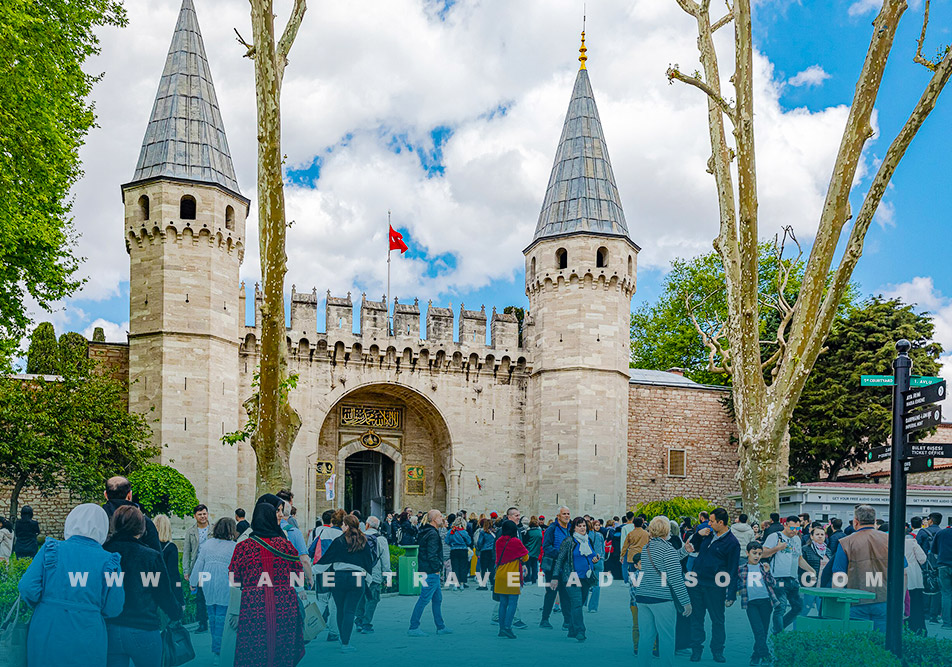
- Opening days and hours: The palace is generally open daily except Tuesday. Hours change seasonally, and the last entry is typically set before the posted closing time to allow for security and safe visitor flow. Always check the official noticeboard or website just before your visit, especially around national holidays and state events when schedules can shift.
- Tickets and what they include: A standard ticket grants access to the palace courtyards and core museum spaces. The Harem is a separately ticketed section unless you purchase a combined ticket that also covers Hagia Irene. Prices and combos can change without notice, and some third-party “skip-the-line” products add guiding services; read the inclusions carefully so you know what you’re buying and whether you still need to pass through a shared security queue.
- Photography rules: Outdoor areas and many galleries allow casual, hand-held photography, but flash, tripods, and professional setups are not permitted. The Treasury prohibits photography entirely, and you’ll encounter local restrictions in the Harem and select interiors. When in doubt, obey posted signage and staff directions; it protects fragile surfaces and helps everyone enjoy the visit.
- How long to spend? Two to three hours will cover the courtyards, one major collection (Treasury or Sacred Relics), and a quick wander through the gardens. For a deeper experience, including the Harem, porcelain, the library area, and time to linger over views, plan for four to five hours. If your schedule is tight, prioritize the Treasury and Sacred Relics, then give yourself at least fifteen unrushed minutes on the Fourth Courtyard terraces.
- Comfort and accessibility: Topkapi’s charm comes with historic quirks: cobbles, steps, and uneven thresholds. Wear supportive shoes, bring water (there are cafés inside), and take shade breaks in the gardens on hot days. Some spaces are compact and can get warm; if crowds are dense, step outside and re-enter the flow in a few minutes. Travellers with mobility needs should contact the site in advance for the latest access guidance and assistance routes.
Getting to Topkapi Palace Museum
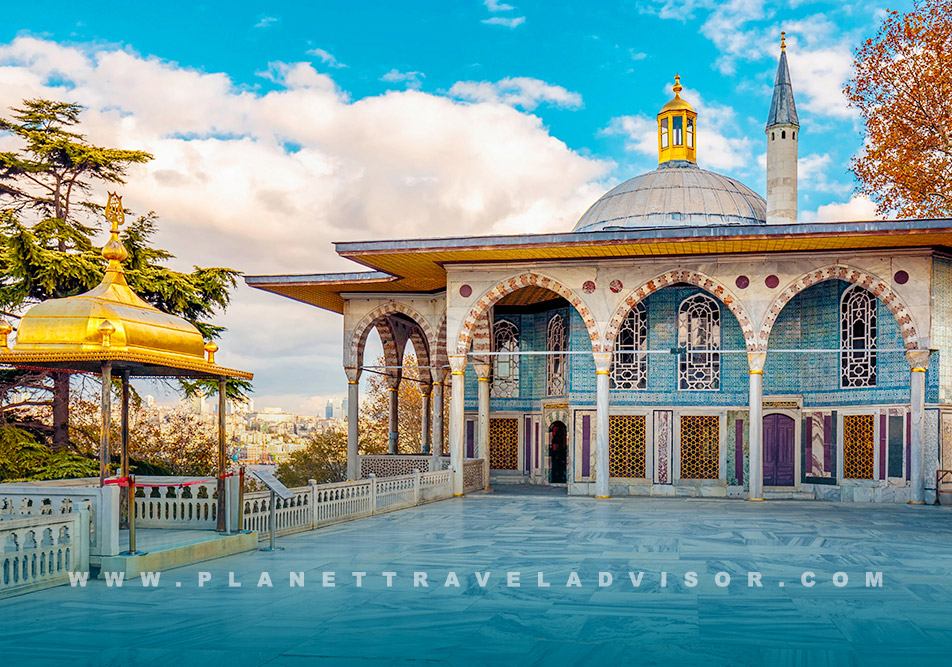
The palace sits in the heart of Sultanahmet, an easy walk from Hagia Sophia and the Blue Mosque. If you’re using public transport, take the T1 tram and alight at Gülhane or Sultanahmet; from either stop, it’s a gentle 8–12-minute walk to the Imperial Gate. Marmaray’s Sirkeci station is also within walking distance.
Taxis can drop you near the Fountain of Ahmed III on the outer square, but traffic in the historic peninsula can be slow at peak hours. If you’re staying in Sultanahmet, the most pleasant approach is on foot: you’ll feel the district’s rhythm long before you see the palace walls.
Address for maps: Cankurtaran Mahallesi, Bâb-ı Hümâyûn Caddesi No: 1, 34122 Sultanahmet/Fatih, Istanbul.
Expert Tips for Topkapi Palace Museum
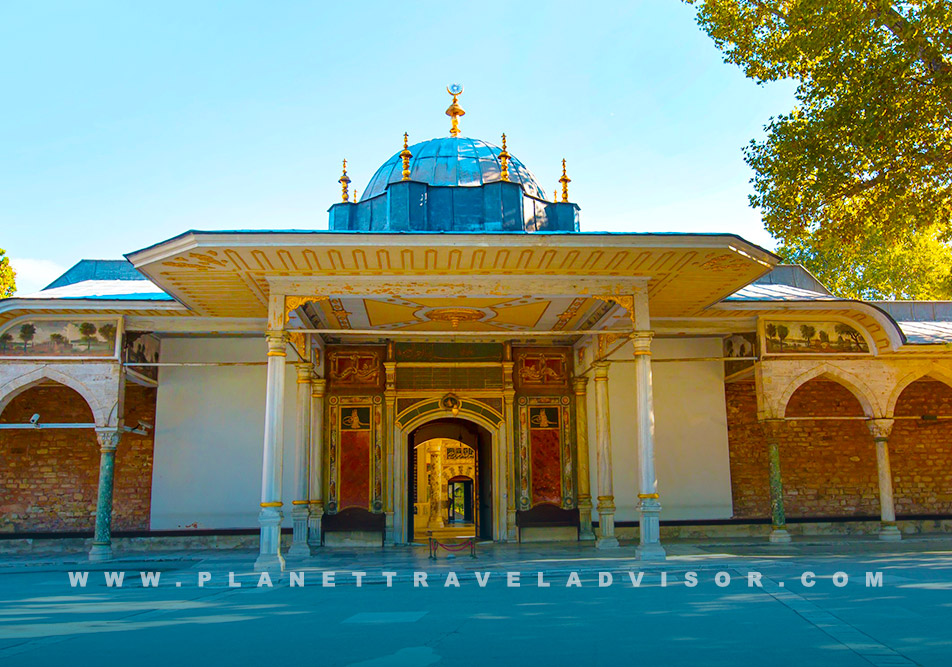
- Arrive at opening time for cooler air and lighter queues, or come after mid-afternoon when tour groups thin out. Even with a pre-purchased ticket, you’ll pass a shared security check, so pad your schedule a little during peak season (roughly May–October).
- If you love objects, start with the Treasury when your energy is highest; if you prefer architecture and gardens, wander the courtyards first and let the day build to the indoor highlights. There’s no single “correct” route; Topkapi rewards curiosity in any order.
- A good guide ties the spaces together, explaining why the Tower of Justice overlooks the council hall, how the Harem was organized, and the logic behind the four courts. If you prefer to explore solo, the official audio guide or a reputable app offers concise context at key stops.
- Move quietly through the Sacred Relics galleries, avoid touching surfaces (centuries-old tiles and wood inlays wear quickly), and stash food and drink before stepping inside museum rooms.
- Lean into the courtyards, gardens, and lookout points; the Harem’s narrow passages and the Treasury’s slow shuffle can be tiring for younger visitors. Build in mini-breaks for ice cream or a cold drink, and everyone will be happier.
- Topkapi combines naturally with Hagia Sophia or the Basilica Cistern. If you plan both in one day, do Topkapi first when you’re fresh, then reward yourself with a cool, echoing cistern or a leisurely tea under the plane trees afterward.
Suggested Route Inside Topkapi Palace Museum
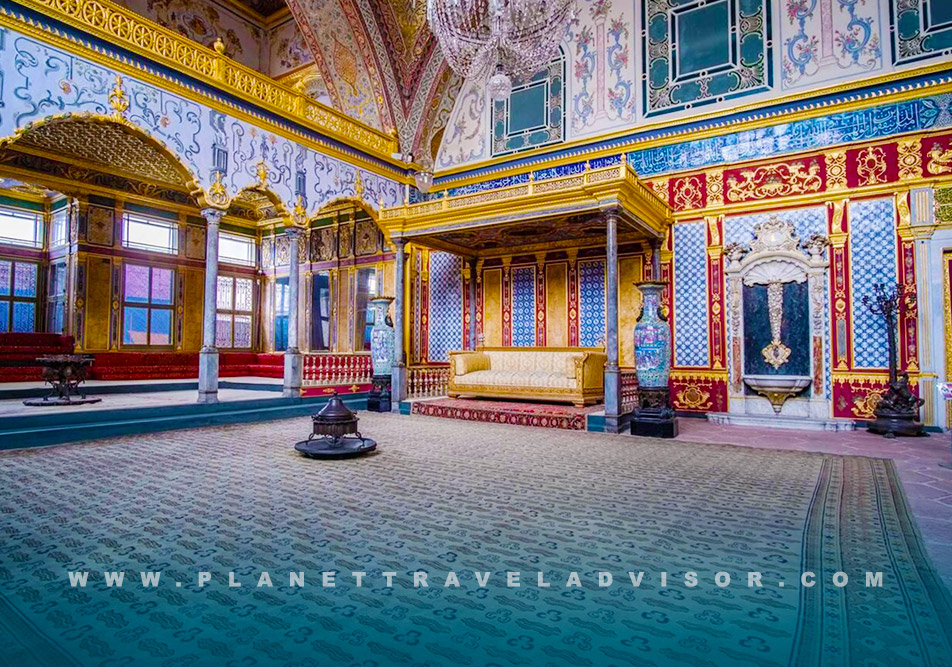
Enter through the Imperial Gate into the First Courtyard and take a quick look at Hagia Irene to appreciate the site’s Byzantine and Ottoman layers. Pass the Gate of Salutation into the Second Courtyard and peek into the Imperial Council chamber, imagine the grand vizier presiding while the sultan listened from above. Continue along the kitchens to glimpse porcelain displays, then approach the Gate of Felicity, the ceremonial threshold to the inner palace.
In the Third Courtyard, admire the Audience Chamber’s exterior details and step around to the Library of Ahmed III. Choose your sequence, Treasury or Sacred Relics, based on queue lengths at the moment. When you’re ready for air and light, drift into the Fourth Courtyard for kiosks and panoramas. On your way back, enter the Harem (separate ticket) for a final hour of richly tiled interiors before you exit through the gardens.
Conclusion: Why Topkapi Palace Museum Stays With You
The Topkapi Palace Museum is more than a checklist sight; it’s a narrative you walk through. Each gate tightens the focus, from public ceremony to private ritual, and each room adds a layer: the glitter of the Treasury, the hush of the Sacred Relics, the warmth of kitchens that once fed thousands, the quiet elegance of a library crafted for readers and poets. Finish on the terraces and the city unfurls at your feet, a reminder of how geography, trade, faith, and art braided together here for centuries. Go with a little background, give yourself enough time, and Topkapi will reward you with something rare in travel: the feeling that you’ve visited not just a museum, but the living memory of an empire.
Embark on an unforgettable adventure with our exclusive tours in Turkey, designed for travelers who crave history, culture, and beauty in every moment. Wander through Istanbul’s bustling bazaars, drift over Cappadocia’s fairy chimneys in a hot air balloon, and explore the ancient marvels of Ephesus. Enjoy priority entry to iconic sites, stays in stylish boutique hotels, and the insight of passionate local guides. With limited spring and autumn departures, now is the perfect time to book.

